A Mini-Guide to Behavioral Email Marketing
Published on January 13, 2017/Last edited on January 13, 2017/8 min read


Team Braze
In today’s marketing world, the campaign is king. Marketers create a promotion or offer, send a promotional message to a relevant segment of their audience (or their whole list, to our dismay), and then hope for the best. While there are ways to make one-off campaigns effective and profitable in the short-term, the long-term impact and effectiveness of a single campaign can be hard to see. To build long-term relationships with customers and drive sustainable growth, marketers need a better way to consistently reach customers with messages that will matter to them. The answer? Behavioral messaging.
Since email is still central to most marketers’ engagement and retention strategies, we’ve put together this mini-guide to help you understand the basics of behavioral email marketing, what’s possible, and how you can implement the strategy to drive growth.
A Mini-Guide to Behavioral Email Marketing
What is behavioral email marketing?
Behavioral email marketing is a customer-centric, trigger-based messaging strategy that helps you provide immediate value to customers based on their actions. In the case of behavioral email marketing, customers dictate what emails they receive through their actions, as opposed to traditional campaigns, where the marketer decides what messages to send. It’s a strategy that allows the marketer to facilitate the conversation, but ultimately lets customers dictate when, where, and how often they receive emails.
Behavioral email messages typically include transactional or triggered outreach like welcome messages, receipts, shipping confirmations, account statements, and a ton more. They also include more dynamic outreach, like location-based messages that use geofences to trigger a message when a customer walks near a store. Not only do customers expect these types of emails, they also perform better than promotional marketing emails. According to the Direct Marketing Association, over 75% of email revenue is generated by triggered emails.
The clear advantage with behavioral email marketing is that you’re able to immediately and automatically respond to key customer moments and provide highly contextualized value for a better customer experience.
Why are behaviors important?
Consider this scenario. What are you more likely to respond to, an email that promotes content or a product you may not like, or an email that provides helpful information on an action you just took? We’d bet the latter.
Behaviors are important for creating rich and contextual experiences for customers. It’s important that marketers transition from speculative strategies to ones that use customer actions to trigger relevant messaging. Customers are more likely to respond to and expect messages that are relevant to their behavior. For instance, if you just made a purchase, there’s a good chance you might open an email that contains follow-up information like receipts, shipping information, and add-ons to help you enjoy the product you just purchased. Using actual customer behaviors to trigger messages is a great way to provide value at the exact moment a customer is expecting it.
In a presentation for Weapons of Mass Distribution, leading growth advisor with experience at Pinterest and Airbnb, Casey Winters, discussed how behaviors shape experiences that use the “right time, right content, right amount” rule for messaging. Winters stressed that marketers should stop sending emails like a marketer, and start sending them like a personal assistant. In other words, tell your customers what you know they’ll want to hear (based on previous actions) instead of telling them what you think they might want to hear.
Here’s the full presentation from Casey Winters (he talks about email at 11:43).
Four Common Actions to Leverage
Marketing automation platforms have the ability to track customer behaviors and subsequently trigger emails. There are four common actions that you can leverage in your strategy: conversions, new registrations, app and site activity, and location activity. Here’s a rundown of all four, with some examples:
Conversions
It’s common to send receipts, shipping confirmations, event reminders, and more when a customer makes a purchase or completes any other conversion event. These emails complete the conversion experience and offer opportunities to introduce additional content, products, and experiences to keep customers engaged.
Here’s an example from Uber. After a customer finishes a ride, Uber sends a receipt summarizing the ride. This email is important for: 1) customer expenses and bookkeeping, 2) customer service support and ratings, and 3) reinforcing Uber’s value proposition.
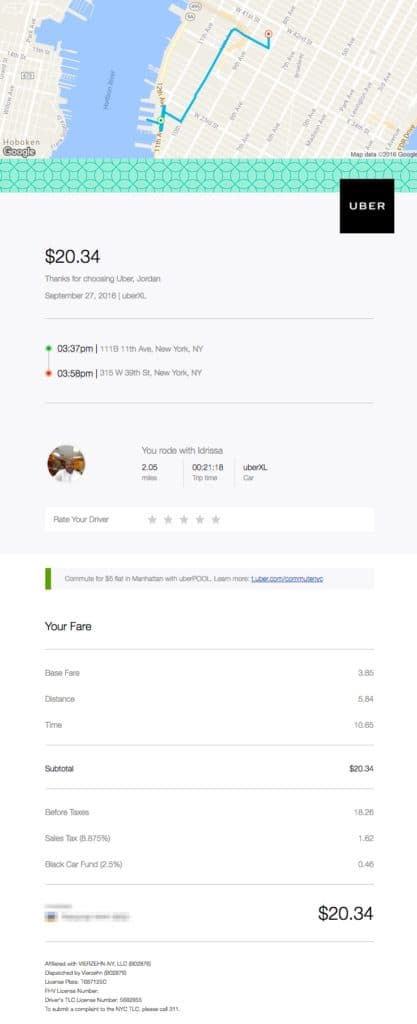
Here’s another example from SoulCycle. When customers want to ride, they have to reserve a bike at a specific location at a specific time. The confirmation email they receive afterwards summarizes essential information for riders.
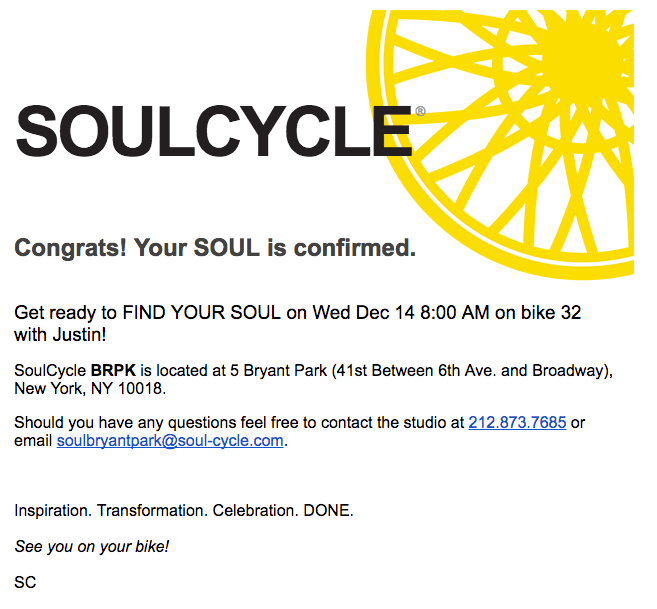
New Registrations
As you already know, onboarding is an important experience in a customer’s first session. The all-important “Welcome Email” is the best place to start when using a new registration trigger.
Here’s an example from Hiya. Hiya’s welcome email addresses any frequently-asked questions new users may have and reassures those users that they’ll use certain granted permissions respectfully.
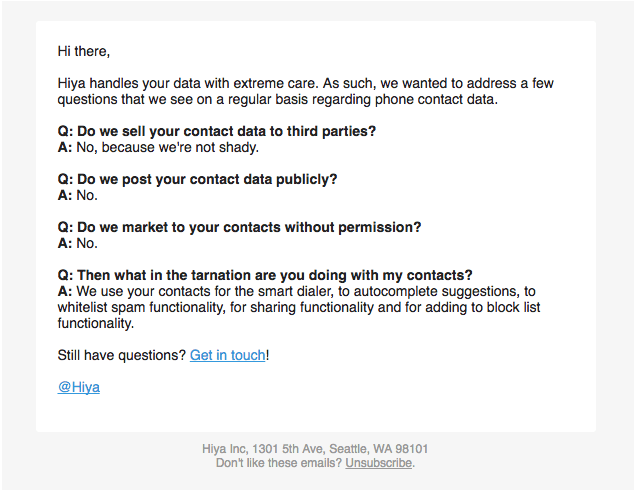
App and site activity
Every app and site has high-value actions that you might want to track and respond to. A customer abandoning their shopping cart is one example of an event that you want to leverage to lead them down the path towards a purchase. Other common use cases include things like viewing category landing pages, rating the app, earning loyalty points, adding a credit card, and more. Here are some more common events across popular verticals:
Retail & eCommerceGamingMediaMusicAbandoned CartBeat LevelPosted CommentBegan RegistrationAdded Item to Wish ListChallenged FriendOpened Daily RecapFollowed ArtistViewed Spring CollectionClicked HintsWatched VideoListened to Playlist
Here’s an example from Product Hunt. Product Hunt uses a connection’s activity as a hook to bring users back to their site.
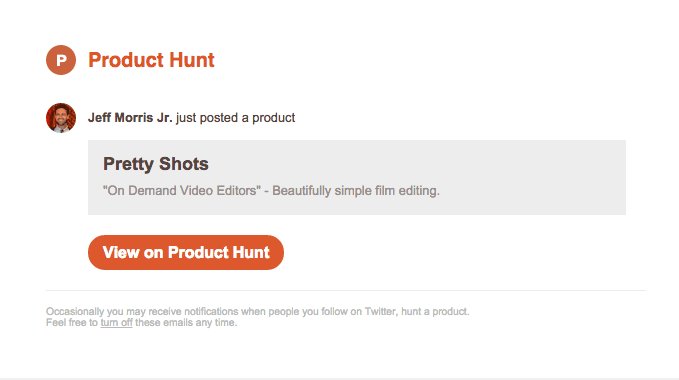
LinkedIn updates users that activity has happened that they should know while they were away.
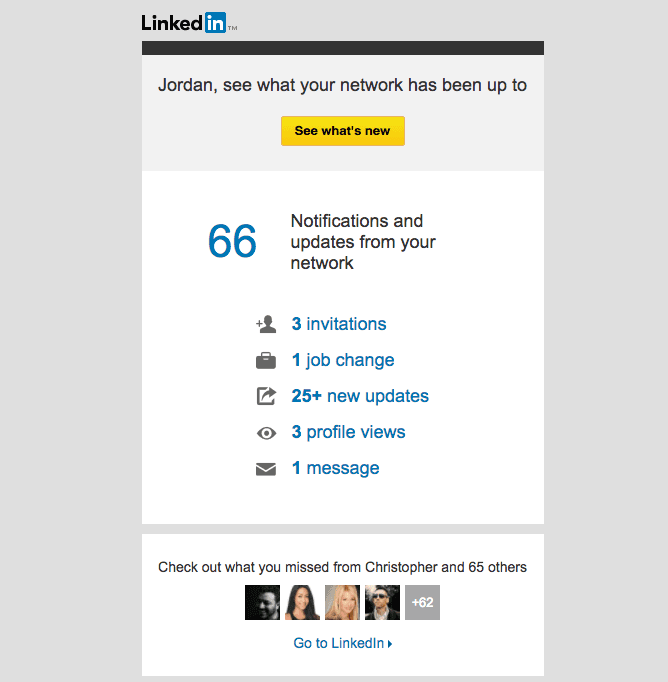
Location Activity
Triggering messages when a person enters, leaves, or is dwelling in a location offers great opportunities to create experiences relevant to the exact needs of a customer within a specified place. By adding a layer of data enrichment, you can understand the context of specific places and the personal connections to frequented places (like home and workplaces), which is important for location-specific messaging (e.g. reminding users to tune in when they arrive home).
Behavioral messaging is the best way to respond to key customer moments.
The (somewhat) technical deets
There are two distinct ways to trigger messages. Triggers (or actions that a customer takes) can come from:
1) Activity within your digital experiences (app or site), or
2) Interactions outside of your digital experiences, like offline retail locations.
Functionally, these triggers can be collected directly within your application by an SDK or triggered by a private or public API. It’s important to note that not all events will be stored within your CRM. If that’s the case, you can use APIs and integrations to make sure that you are triggering emails based on things like a customer’s personal network activity or availability of new content.
Personalize with Segmentation
The same data you use for triggering messages can also be used for segmentation. By combining different data points, you can create personalized and relevant emails—at scale.
BehaviorsInterestsGeneral UsagePurchases Fine-Grained Activity AttributesCampaign InteractionsDevice InformationIntegrations
Email is only one part of the behavioral messaging puzzle
Email is one of several channels where you can reach customers and pull them back into your application. It’s a powerful channel and fits seamlessly into a multichannel experience. Email should work with other channels, like push, to create external triggers, as well as reinforce habits and internal associations with your product. With the many channels, devices, and triggers influencing customers’ purchasing behaviors, a multichannel and multi-device strategy will help you craft a cohesive brand experience that translates into repeat conversions.
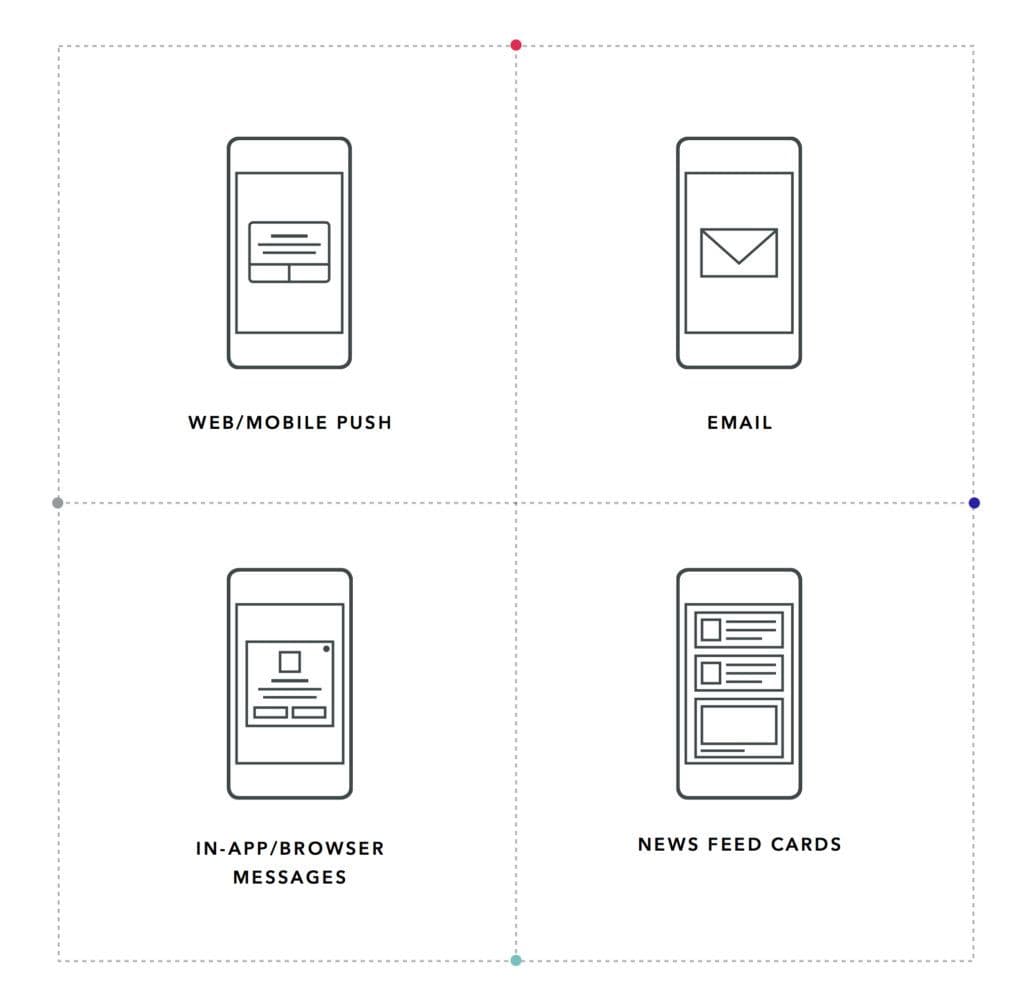
Six ideas to get started with behavioral email
So now you know the basics and the benefits of behavioral email marketing. We know you’re itching to get started, so here are six ideas you can implement today:
Onboard
Help customers understand the value of your app or site by setting up a welcome email triggered for new customers who complete registration.
Educate
Continue building your relationship with your new users by providing information that enhances their overall experience with your brand or offers other valuable insight about your product. Share tips, industry news, or newly released features to continue your dialogue with those who may need more information.
Nudge
To capture that lost revenue, Nudge your users to return to their abandoned shopping cart or a key actions with targeted messaging highlighting what the value of the product or an action.
Remind
Be your user’s hero. Alert them when their free trial is due to end, if their storage is running low, about a shortage of inventory in their favorite product, and much more. Earn their trust and offer value at the same time. It’s a win-win.
Notify
Keep the attention of your audience by notifying them of interesting moments through messaging. Did they recently beat a difficult level? DId a friend of theirs post something that would interest them? Let them know!
Request
After a customer takes a certain action, provide opportunities for customers to give feedback to continue improving their experience with your brand. Keep surveys simple, offer incentives to encourage higher levels of survey completion, and recognize and thank those that offer up their opinions
Anything Else?
Braze Director of Email Deliverability Andrew Barrett on how to avoid coming off like a spammer
Behavioral email marketing is a powerful strategy for responding to critical customer moments. But let’s be clear, it’s not the lazy route. Although it may seem like a set-it-and-forget-it strategy, it’s not hands-off by any means. A behavioral messaging does well with a comprehensive engagement and retention strategy that includes those one-off campaigns every marketer loves.
Be Absolutely Engaging.™
Sign up for regular updates from Braze.
Related Content
View the Blog
Harnessing machine learning in marketing: Benefits, use cases and best practices

Team Braze

The future of payments: Enhancing innovation and trust in a changing landscape

Erin Bankaitis
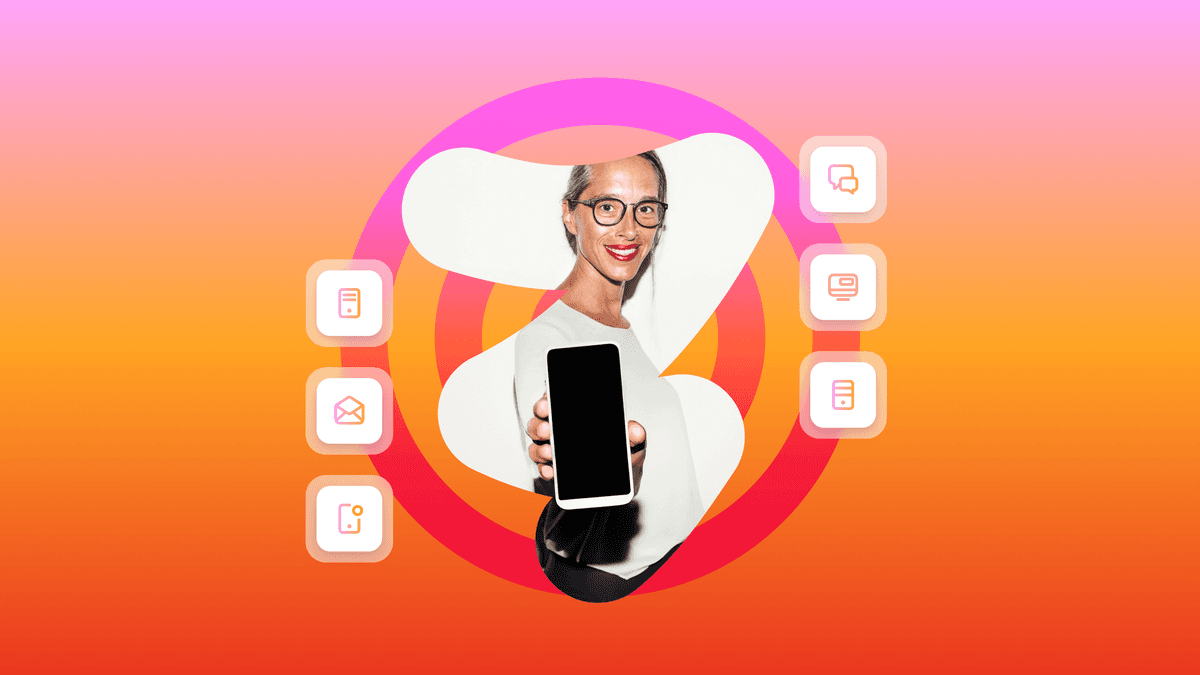
Multichannel optimization: Unlocking a more cohesive strategy for engaging customers
